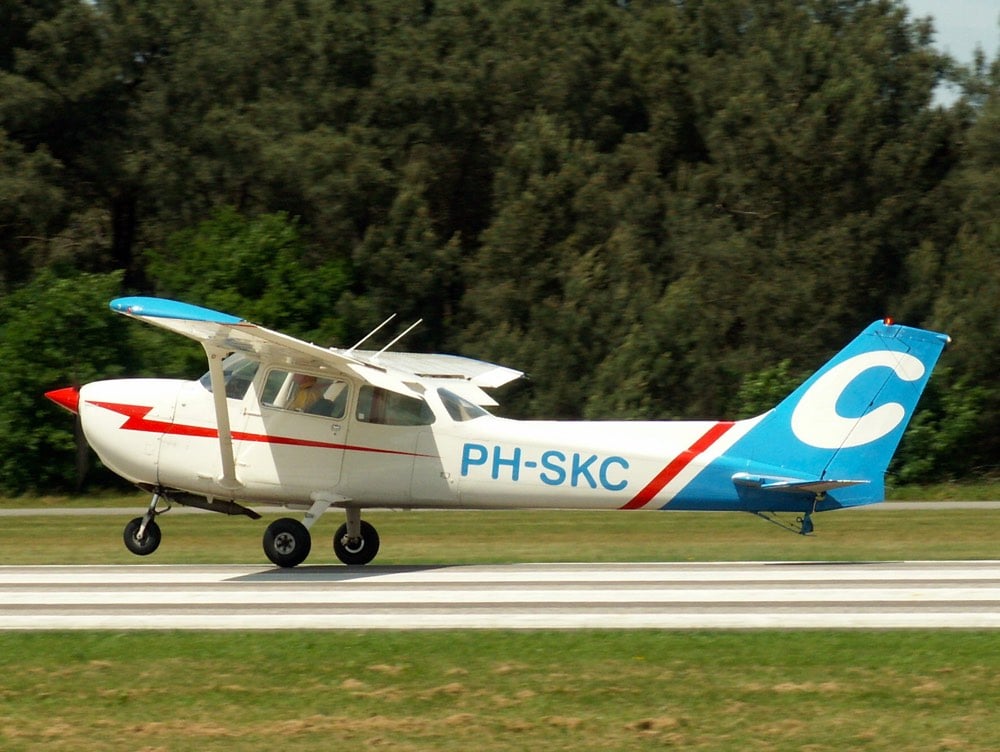The Cessna 172, the world’s most popular small airplane

The Cessna 172 has been in production since 1956 and the design is essentially the same now as it was then.
You might think this was a high-performance car with a little more-than-average leg room — but it’s a plane. The Cessna 172, which first rolled off the production line in 1956, is still in production today. And if any design could claim to be the world’s favourite aircraft, it’s the 172.
More than 43,000 Cessna 172s have been made so far. And while the 172 (also known as the Skyhawk) has undergone a myriad of tweaks and improvements over the past 60-odd years, the aircraft essentially looks much the same as it did when it was first built in the 1950s.
In the past 60 years, Cessna 172s have become a staple of flight training schools across the world. Generations of pilots have taken their first, faltering flights in a Cessna 172, and for good reason — it’s a plane deliberately designed to be easy to fly, and to survive less-than-accomplished landings.
The 172 was so durable, a pair of pilots kept one in the air continuously for more than 64 days.
Refuelling and resupplying the plane with food and water was an even bigger challenge. The Cessna had to fly close to the ground and match the speed of a car carrying supplies for the pilots — the reserve pilot would then lower a bucket so food and water could be put in it and then hoisted back up into the cabin. And twice a day, a fuel tanker drove underneath the Cessna and a hose was raised up to the aircraft. It filled up a belly tank especially installed for the flight, which then transferred fuel into the plane’s normal fuel tanks (and then the belly tank was topped up too). Even driving the resupply vehicles was a challenge — while one person steered, the other matched the speed of Timm and Cook’s Cessna by looking out of the window while keeping their foot on the accelerator. It was a good thing the flight took place in Nevada, with acres of flat, featureless desert outside the city boundaries.
My dad ran a small airline when I was a kid and one of his planes was a 172 built in 1964. I have a lot of fond memories of that 1721 — that was the plane he taught me how to fly when I was 5 or 6 years old, it’s the one he kept when his business folded in the early 80s, and he used it to come get me at college a few times. It was also the plane I last flew in with my dad.
One of the last times I went flying with my dad, before it finally became too expensive for him to keep up his plane, we were flying into a small airport where he still kept a hangar. It was a fine day when we set out but as we neared our destination, the weather turned dark. You could see the storm coming from miles away and we raced it to the airport. The wind had really picked up as we made our first approach to land; I don’t know what the windspeed was, but it was buffeting us around pretty good. About 50 feet off the ground, the wind slammed the plane downwards, dropping a dozen feet in half a second. In a calm voice, my dad said, “we’d better go around and try this again”.
As far as I know, he still has the 172 stashed away in a hangar somewhere. It hasn’t flown in probably 20 years, but I bet if you threw some gas in it and cranked ‘er up, it’d fly just fine. (via @jasonfried)
Maybe other people name their planes, but my dad didn’t. His stable of aircraft included “the 172”, “the 401”, “the Aztek”, and the “Cherokee 6”…those are the ones I remember anyway.↩





Stay Connected